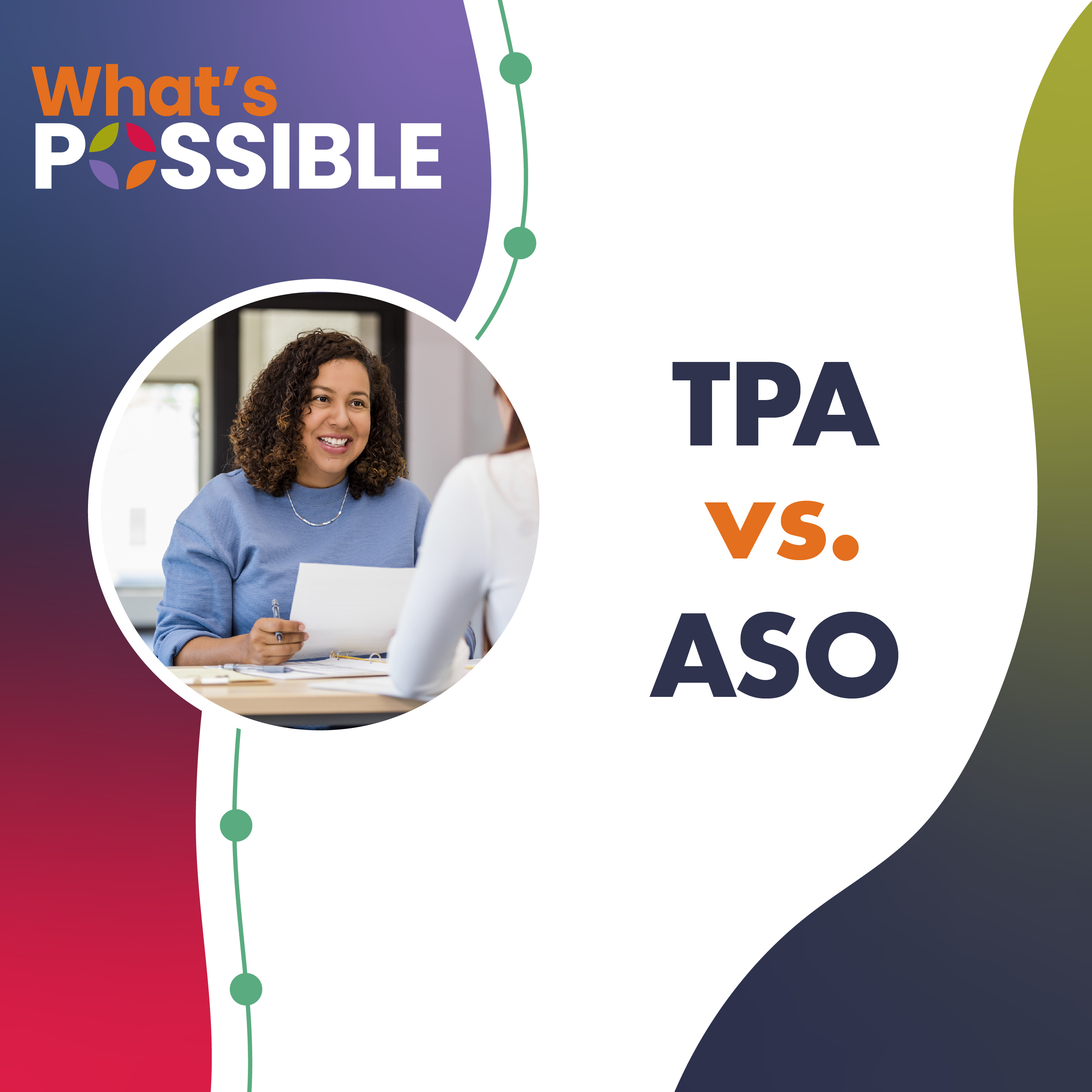Navigating Employee Benefits: What is the Difference Between a TPA and ASO?
Here's a hint: they are two different things.
 If you’re an employer who offers a self-funded (also known as self-insured) health plan – or thinking about moving to a self-funded arrangement, one of your biggest decisions is selecting a partner to administer your health benefits. If you’ve gotten this far, you’ve probably heard of a Third-Party Administrator (TPA) and Administrative Services Organization (ASO). They do provide some of the same services and you may have even heard the terms TPA and ASO used interchangeably, BUT did you know they are actually two different things?
If you’re an employer who offers a self-funded (also known as self-insured) health plan – or thinking about moving to a self-funded arrangement, one of your biggest decisions is selecting a partner to administer your health benefits. If you’ve gotten this far, you’ve probably heard of a Third-Party Administrator (TPA) and Administrative Services Organization (ASO). They do provide some of the same services and you may have even heard the terms TPA and ASO used interchangeably, BUT did you know they are actually two different things?
If you’re considering self-funding your employee health benefits, it’s important to understand the differences between a TPA and ASO to make informed decisions that align with the unique needs of your business.
Third-Party Administration (TPA):
A TPA is a third-party entity responsible for processing insurance claims and administering other services related to your employee health benefits.
Administrative Services Organization or Administrative Services Only (ASO):
An ASO arrangement also involves outsourcing specific administrative functions to a third party. ASO most often refers to administrative services provided through a traditional, brand name health insurance carrier.
Key Differences and Choosing the Right Model
- Decision Autonomy and Access to Data: Employers opting for TPAs usually enjoy more flexibility in plan design and autonomy in decision-making, relying on the TPA’s expertise coupled with access to their health plan claims data.
- Fee Structure: TPAs typically operate on a fee-for-service model, charging organizations for the specific services rendered. ASO arrangements often involve a fixed fee or a percentage of claim costs.
- Network Options: With an ASO, you more commonly have limited access to provider networks (a.k.a the network of the ASO’s parent company). TPAs often provide more flexibility in network solutions or alternative pricing models.
- Vendor Integration: This is another area where an ASO tends to be limited but a TPA may offer the option to partner with a variety of vendors to empower you to curate a package of services that align with your vision for employee health care. The choice is yours, from health care networks and dental services to vision care and pharmacy benefits managers (PBMs).
While TPAs and ASOs offer similar services, these are just some of the differences between these two types of organization. Ultimately, the choice between a TPA and ASO hinges on the specific needs and preferences of your business and workforce. Do your research and consider what type of benefits administrator will empower you to take advantage of the full scope of opportunities available in a self-funded arrangement. Let Nova show you what’s possible and explain more of the distinctions between these types of service providers in this brief video.
